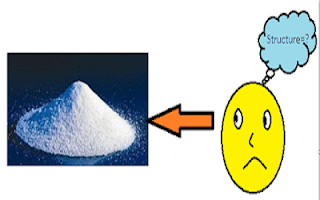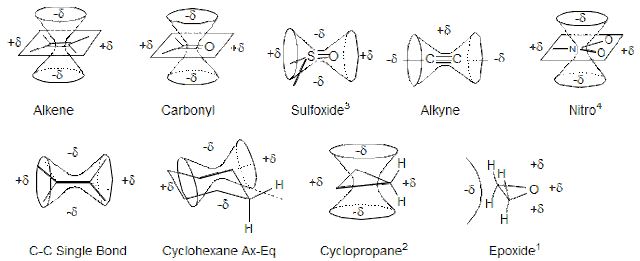Cause of Chemical shift and its measurement in NMR
Upto now we have learnt some basic concepts behind NMR method. (Nuclear Magnetic Resonance)
We also know that this method tells about the environment around an atom in a molecule.
Let us take a example of ethanol,
In a same external magnetic field all the nuclei of hydrogen atom in ethanol must have to be precessed with equal precessional frequency but in real this is not happened. And this become a boon for NMR to detect difference between those hydrogen atoms positions in a molecule.
- Now we will discuss how this NMR method helps in elucidation of molecular structure.
We also know that this method tells about the environment around an atom in a molecule.
Let us take a example of ethanol,
In a same external magnetic field all the nuclei of hydrogen atom in ethanol must have to be precessed with equal precessional frequency but in real this is not happened. And this become a boon for NMR to detect difference between those hydrogen atoms positions in a molecule.
Why all nucleus of a same atom do not precess with same frequency?
- The solution is that precession of a proton is depend on the external magnetic field , but inspite of same external magnetic field this difference is caused due to the shielding of valence electron around the nucleus in an atom.
- Electron being a charge particle when moves around a nucleus creates its own magnetic which become a restriction to external magnetic field for approaching the nucleus.
- This different reach of external magnetic field cause in different precessional frequency of many nuclei of same atom in a molecule.
In the above fluoroethane molecule the hydrogen attached to carbon (which has fluorine) is more deshielded than other hydrogen atoms by Inductive effect of fluorine.
Chemical Shift:-
The above term can be understand by taking example of ethanol. Since we know that the nucleus of 1H atom precessed at 60 MHz in 1.4 T external magnetic field. But experimentally ethanol shows three different values of precessional frequency of 1H proton. This change in frequency from the standard value is called Chemical Shift .
Measurement of Chemical Shift
The general formula for calculation of chemical shift is given below:-
Chemical shift, δ =( v(irradiated nucleus) - v(TMS) )/ v(operating)
v(irradiated nucleus)= the precessional frequency of the nucleus to be observed
v(TMS) = the precessional frequency of TMS solution
v(operating) = this is the frequency of spectrophotometer
Problem:- let assume that the difference in frequency of 1H nucleus of a molecule from TMS is 160 Hz in the spectrophotometer of frequency of 60 MHz source . Calculate the value of δ in ppm.
Solution:- v(irradiated nucleus) - v(TMS)=160 Hz
v(operating) = 60 MHz= 60,000,000 Hz
δ =160/60,000,000 = 2.67 ppm.
Another way to describe is:-
Problem:- let assume that the difference in frequency of 1H nucleus of a molecule from TMS is 160 Hz in the spectrophotometer of frequency of 60 MHz source . Calculate the value of δ in ppm.
Solution:- v(irradiated nucleus) - v(TMS)=160 Hz
v(operating) = 60 MHz= 60,000,000 Hz
δ =160/60,000,000 = 2.67 ppm.
Another way to describe is:-
Measurement
of chemical shift
Since
we know that nucleus of a Hydrogen atom precess with precessional frequency of
60MHz under magnetic field of 1.4T. But when this hydrogen is present in a
molecule, its nucleus is shielded by electron cloud which causes a slight shift
in precessional frequency. This shift in frequency from actual reference frequency
(as 60MHz in hydrogen nuclei) is called as chemical shift.
Vobs = Vref(1-ð)
ð = (Vref - Vobs
)/ Vref
ð= Chemical shift
in ppm.
Vobs
=
Observed frequency.
Vref = Reference frequency.





Comments
Post a Comment